Past WWCF
2020
Past WWCF 2020
Overview
- Date
- 22-23 September 2020
- Venue
- Room 325, 323B, EXCO, Daegu, Republic of Korea
- Theme
- Water Cities’ Cooperation and Innovation
- Host
- Daegu Metropolitan City
- Participants
- Government officials, Water Specialists and Academics from 9 Cities in 8 Countries and 2 Organizations
- Program
-
- Keynote Speech Resilient Communities for Water Secure Cities
- Session 1 Presentation and Discussion on Yixing’s Water Challenge
- Session 2 Presentation and Discussion on Bangkok’s Water Challenge
Overview
- Date : Sep. 22(Tue) - 23(Wed), 2020
- Venue : #325, #324B, EXCO, Daegu, Republic of Korea
- Host : Daegu Metropolitan City
- Invited Cities / Organizations : 9 Cities in 8 Countries and 2 Organizations
Bangkok(Thailand), Jhelum(Pakistan), Kumamoto(Japan), Leeuwarden(Netherlands), Mikkeli(Finland), Orange County(USA), Shaoxing(China), Yixing(China),
UNESCO, Water Alliance
- Participants : Government Officials, Water Specialists and Academics
Program Timetable
| Time | Program |
|---|---|
| 16:00~ 16:10 (10’) | Opening |
| Welcoming Remarks (Daegu Mayor) | |
| Congratulatory Remarks (Minister of Environment) | |
| 16:10~16:20 (10’) | Keynote Speech “Resilient communities for water secure cities” (Dr. Shahbaz Khan, Director of Regional Science Bureau Asia, UNESCO) |
| <Session 1> Presentation and Discussion on Yixing’s Water Challenge | |
| 16:20~17:15 (55’) | Presentation of Water Challenge I Yixing "Building a sustainable wastewater treatment plant for the future" |
| Solutions to the Water Challenge I ① Bangkok ② Shaoxing ③ Orange County ④ Leeuwarden ➄ Daegu |
|
| [Panel Discussion] Discussion on solutions and implementation plans Vote for top 1 solution |
|
| <Session 2> Presentation and Discussion on Bangkok’s Water Challenge | |
| 17:30~18:25 (55’) | Presentation of Water Challenge II Bangkok "‘Tool & methods to increase the saltwater solution efficiency in water supply of MWA" |
| Solutions to the Water Challenge II ① Mikkeli ② Yixing ③ Kumamoto ④ Orange County ➄ Daegu |
|
| [Panel Discussion] Discussion on solutions and implementation plans Vote for top 1 solution |
|
| 18:25~18:30 (5’) | Closing |
Suggested Water Challenges 2020

 1
1 

Introduction of participants in WWCF 2020
Yixing - China
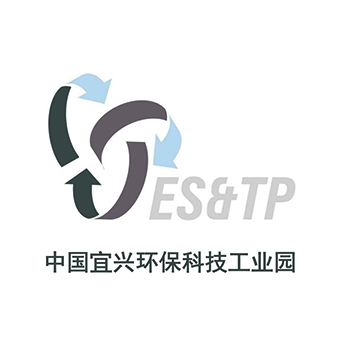
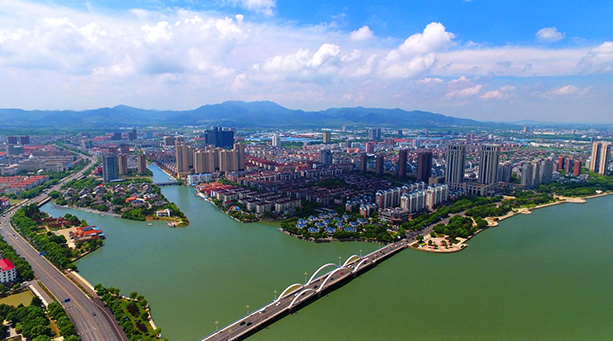
About the Organization
| Name | China Yixing Industrial Park for Environmental Science & Technology |
|---|---|
| Population | 1.3 million |
| Main Industry/Economy Sectors | Environmental Protection Industry, High-end cables and wires, New Material and Ceramics |
| Source of Water Supply | Heng Shan Reservoir |
| Website | www.yixing.gov.cn |
Introduction of the City/Organization (focusing on water-related issues)
Yi Xing is located in the south of Jiang Su province. As one of the fastest economic development regions in the economic circle of Yangtze Delta Area, Yixing is enjoying advanced economic development with industrial and commercial prosperity.
Known as the Hometown of Environmental Protection Industry and Environmental Protection Equipment Base, with more than 2000 related enterprises, Yixing has become an important base featuring water treatment equipment production with 200 series and over 2000 related products, forming a complete Environmental Protection Industrial System integrated with research and development, designing, manufacturing, engineering, and services.
Water Challenges in Yixing - Building a future-oriented concept WWTP and exploring the sustainable development of wastewater treatment
Description
Currently, the mainstream treatment process for wastewater in China runs counter to the idea of sustainable development, which is shown as:
1. Treatment process currently applied are still following the ones used in 1960s and 1970s;
2. High water quality of effluent is at the expense of huge energy consumption;
3. The resource recovery efficiency is very low;
China is the world`s largest market for wastewater treatment and Yixing has nearly 40% of that market share. It is time for us to reconsider the process for wastewater treatment. Yixing introduced the vision of building the concept wastewater treatment plant (WWTP) aiming for 2030-2040.
With the international cutting-edge technologies applying and displaying in concept WWTP China’s municipal wastewater treatment industry will embrace a new era with the core of sustainable development.
Scale
20,000t/day
Key specs
Base on the discussion from several workshops, the vision of the concept WWTP shall include but not limited to the following pursuits:
1. Making the effluent water quality meets the needs of water environment change and sustainable utilization of water resources.
2. Improving energy self-sufficiency rate for WWTPs and achieving zero energy consumption with codigestion with moderate exogenous organic waste.
3. Seeking reasonable material recycling and reducing consumption of chemicals.
4. Constructing a pleasant, harmony, environmentally and community friendly WWTP.
Challenges and Ambitions
In order to achieve the pursuits, the design of the concept WWTP should consider the predicted breakthroughs in treatment process, technology, material, and equipment. As an important infrastructure in Yixing, Concept WWTP should not only be concerned by technical experts and engineers, but also the government officials, architects and urban designers, to explore and build a paradigm for future WWTPs.
Building China Concept WWTP is a great cause which obeys the law of innovation, and covers the scope of putting forward the concept, research and develop, project demonstration and technology industrialization.
Bangkok (Metropolitan Waterworks Authority) - Thailand
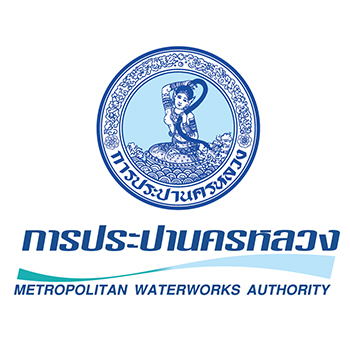
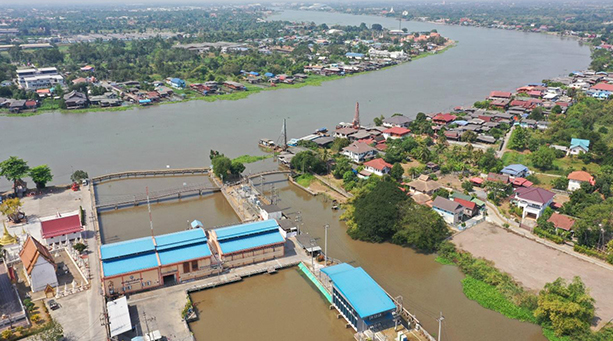
About the City/Organization
| Name | Metropolitan Waterworks Authority (Bangkok) |
|---|---|
| Population | 6 Million People |
| Main industry/ Economic sectors |
Water Supply |
| Source of water supply | Chao Phraya River and Mae Klong Dam |
| Website | www.mwa.co.th |
Introduction of the City
Bangkok is the capital of Thailand with the population of around 6 million people. The city occupies 1,568.7 square kilometers in the Chao Phraya River delta in central Thailand. The river meanders through the city in a southerly direction at Samut Prakan province, emptying into the Gulf of Thailand.
The Metropolitan Waterworks Authority (MWA) is responsible for providing clean and safe water supply to the people in Bangkok, Nonthaburi and Samut Prakan provinces. The MWA’s raw water comes from the Chao Phraya river to be one of its sources. Its raw water intake is located in Samlae sub-district, which is 96 kilometers away from the Gulf of Thailand.
Water Challenges in Bangkok - Tool & methods to increase the salt water solution efficiency in water supply of MWA
Description
Currently, the drought crisis in Thailand has been being intensified, resulting in less amount of water in the main dam. Normally, the freshwater is released from the dams of the Chao Phraya River basin for agriculture, consumption and it also helps push the seawater level away from raw water intake, but recently, the amount of released water has not been enough to push seawater causing saltwater intrusion to Sam Lae raw water pumping station. Thus, the seawater intrusion in raw water leads to increasing salinity of water supply. The Metropolitan Waterworks Authority (MWA) is responsible for the supply and service of standard tap water for consumption, and therefore MWA has to solve this problem. However, the water use demand from the Chao Phraya River basin is highly up to 4.6 million cubic meters per day and MWA cannot find new raw water source. Besides, the water treatment plants of MWA were designed as conventional water treatment processes for surface water that is freshwater. Therefore, the water treatment plants cannot remove salinity from raw water; so, this solution was not effective enough. As a result, in certain times, MWA faces difficulty in treating saline water to maintain the standards.
Scale
For water supplied in Bangkok, Nonthaburi and SamutPrakan provinces
Key specs
MWA develops a tool and methods to solve the saltwater problem that is more efficient and can reduce the impact. The development of tools requires integration of various data, both past and present, from both inside and outside the organization, such as data from numerous water quality and quantity analysis equipment installed in raw water sources, in order to create an automatic salinity prediction model in the Chao Phraya River 1-3 day in advance using LSTM (Long Short-Term Memory) tool. This could predict approximately 0.94 of R-squared and be a tool for planning and pumping raw water at an appropriate salinity level into raw water canal, which can reduce the number of raw water hours that are over-standard salinity in March 2020 from 172 hours to 72 hours or representing a decrease of approximately 58 percent and adjust the water production rate to suit the raw water pumping rate at the raw water pumping station that will not have an impact on customers. The aforementioned tool can be used to schedule and plan to effectively push the seawater away from the raw water pumping station by coordinating with the Royal Irrigation Department (RID). This is called the “Water Hammer Flow Operation in the Chao Praya River”, letting large masses of water repel the high salinity wedge. RID increases released water/water diversion and opens the Khlong Lat Pho floodgate during low tide (closed during high tide) while MWA stops pumping raw water into raw water canal and adjust the water production rate to suit the raw water pumping rate. This is how MWA copes with the seawater problem, which helps guide what to do next and set directions in seawater problem management. However, it would be great if there are more solutions to be discussed for this challenge.
Daegu Metropolitan City - Republic of Korea


About the City/Organization
| Name | Daegu Metropolitan City |
|---|---|
| Population | 2.5 million |
| Main industry/ Economic sectors |
Water, futuristic vehicle, medical, IoT, robot, auto, machinery, metal industries |
| Source of water supply | Nakdong river, Unmun dam, Gachang dam, Gongsan dam |
| Website | www.daegu.go.kr/english/ |
Introduction of the City
As Korea’s water hub, Daegu Metropolitan City fosters water industry through Korea Water Cluster, core infrastructure for innovative water technology development and commercialization. The city forges global water partnership to address global water issues by annually hosting the World Water Cities forum.
As a sustainable and ecological city, Daegu Metropolitan City has implemented the Nakdong River and urban stream restoration project and upgraded water treatment infrastructure from 1983 to 2018 with investment of USD 3.6 billion.
Since the city successfully hosted the World Water forum in 2015, the first national water industry cluster “Korea Water Cluster (KWC)” has been established on 650,000㎡ site in Daegu National Industrial Park with investment of USD 300 million. KWC is equipped with water industry promotion facilities, demonstration facilities and industrial complex. Daegu provides water companies in the KWC with one-stop support ranging from water technology R&D, verification/certification to global market expansion. In order to address global water issues, Daegu has implemented Water Treatment Facility Donation programs for the developing countries in collaboration with 16 KWC’s water companies. In 2017, those companies voluntarily donated water treatment facility to Vinh Long province, Vietnam. The water treatment system enabled 500 households to have access to clean and safe water.
Daegu City has also participated in the government's ODA project to create a Water Treatment Techno Park in Colombia with a total budget of USD 9.3 million, and is seeking to build water-related facilities, nurture manpower, transfer technology and enhance cooperation between Korea and Columbia from 2019 to 2022. In an effort to enhance the global partnership, Daegu is annually hosting the Korea International Water Week (KIWW) and World Water Cities forum (WWCF). In addition, IWRA’s ⅩVII World Water Congress, the largest water resources event, will be held in Daegu, Republic of Korea from September 12 to 16, 2021.
Water Challenges in Daegu - Urban Stream Depletion
Description
Daegu is the third largest city in Korea with a population of 2.5 million. Daegu once suffered from the water crisis due to severe pollution as wastewater flowed into the urban stream along with the development of textile industry during the period of 1970s and 1990s. However, the city successfully transformed challenges into opportunities with the extension of water treatment facilities and development of advanced water treatment technologies. Since then, the water quality of the city has improved significantly to the extent that otters known to live in the freshest water (grade 1) habitats are found in the region. Recognizing the importance of water, Daegu hosts Korea International Water Week and World Water Cities Forum each year since the opening of World Water Cities Forum 2015 and it is committed to solving water problems and fostering water industries by establishing Korea Water Cluster.
Scale
The Nakdong River and Geumho River run through its districts and there are 23 tributaries including Sincheon. The length of both rivers extends to approximately 99km including 58km of Nakdong and 41km of Geumho, and the remaining tributaries stretch across about 190km. Among them, 20 streams are eroded and their depletion rate amounts to a 91%.
The mid/small streams run across the city have covered entirely or in part in order to use surrounding areas as roads, parking lots, and buildings as a solution for urban overpopulation in the midst of rapid industrialization and many of them have lost their shape. The deteriorating environment of urban streams caused decrease of groundwater recharge rates with the increase of impermeable areas as well as decline of groundwater levels due to its exploitation, resulting in the decrease of river flow rates, water pollution and habitat change in the local environmental conditions for organism lives ensuing water scarcity. As for Sincheon, treated wastewater is reused for the supply and maintenance of streams. However, most streams are depleted and restoring the broken water cycle is urgently needed. Hence, the city asks you to explore ways to solve such urban stream depletion problems together.
Additional Info
Daegu hosts Korea International Water Week and World Water Cities Forum each year to discuss solutions for global water challenges and identify measures for cooperation. We look forward to your continued interest and participation so that our efforts to achieve SDGs to take a step forward.
Jhelum - Pakistan
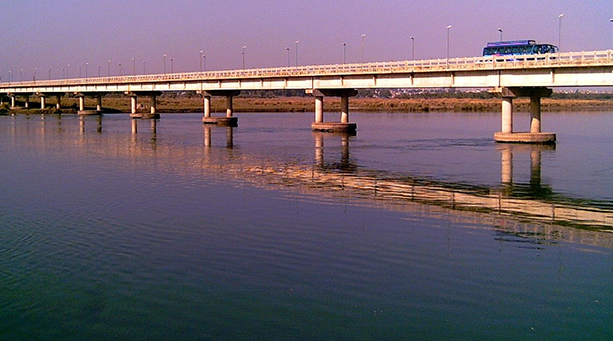
About the City/Organization
| Name | Jhelum |
|---|---|
| Population | 1.2 million |
| Main industry/ Economic sectors |
Mining, Tobacco, Tourism |
| Source of water supply | Springs, Tubewell |
Introduction of the City
Description
Being at the foothills of the Salt range, most of groundwater in district Jhelum is saline. The drinking water to the local community is being provided through installation of tube wells at the bank of River Jhelum and small springs originating from the Salt range. There is acute shortage of drinking water in the area. The area lying between river Jhelum and Salt range is comprised of virgin land. The groundwater and discharge brought by hill torrents are saline, therefore irrigation is being practiced just on edge of river Jhelum, whilst remaining area of about 160,000 acres is deprived of any irrigation supply. Therefore, farmers are mainly practicing rainfed agriculture.
The water quality in district Jhelum is facing severe challenges due to untreated disposal of domestic wastewater. In most of the tehsils of district Jhelum wastewater is flowing openly or in open small drains which are not connected to any main drain. As a result, proper sewerage collection system is not in place. Moreover, solid waste like plastic bags blocks the sewer lines.
The wastewater without any treatment is either used for irrigation or dumped into the local ponds or into Jhelum river. The wastewater discharges from human activities in various tehsils of Jhelum has not only caused fouling, problems for pedestrian’s movements but also resulted in waterborne and vector-based diseases.
The wastewater mixing in surface water and seepage into the groundwater is also deteriorating the water quality in various areas due to higher load of microbial and nitrate contamination. If the untreated municipal waste is allowed to be continuously dumped into soil and water bodies specifically the river Jhelum; this may result into serious public health and ecological threats in the near future.
Scale
Pakistan Council of Research in Water Resources (PCRWR) conducted a detailed study on groundwater assessment and quality of the area. The study shows that fresh water supply is scarce and vulnerable in terms of its availability, quantity and quality. There is only a shallow and small fresh groundwater pocket existing near Jalalpur village, whereas the groundwater of the remaining tehsil is highly saline and unacceptable for drinking.
PCRWR also conducted a detailed investigation during 2019-20 to elucidate the wastewater impacts and treatments needs analysis in the district. Accordingly, Pind Dadan Khan, Sohawa and Dina tehsils of Jhelum district have shown a grave situation with respect to wastewater pollution and lack of sewerage collection and treatment system.
Key specs
The water and wastewater treatment is important before the health and hygiene of the people living in these areas suffer further. To achieve the SDG 6 Target 6.3, at least 50% of the produced wastewater needs to be treated by 2030. Thus, the approach of recycling, reduce and reuse of wastewater should be introduced for safe and environmentally sustainable way of wastewater utilization.
1. Optimization of existing sewerage and drainage system: Proper sewerage and drainage system including sewage collection should be placed in all the urban and rural areas of district Jhelum.
2. Installation of wastewater treatment systems: The wastewater treatment using appropriate site specific treatment methods such as constructed wetlands using bioremediation, bio-cleaner, sewage treatment plant etc. should be introduced with defined modalities for sustainable operation.
3. Capacity Building: To help the local communities to have access to safe water quality, the capacity of Public Health Engineering Department, Tehsil Municipal administration and village water committees/associations should be enhanced for disinfection of drinking water sources and water storage bodies as well as regular water quality monitoring.
Additional info
If needed detailed technical reports of Jhelum city may be downloaded from the webpage of Pakistan Council of Research in Water Resources (www.pcrwr.gov.pk)
Kumamoto - Japan

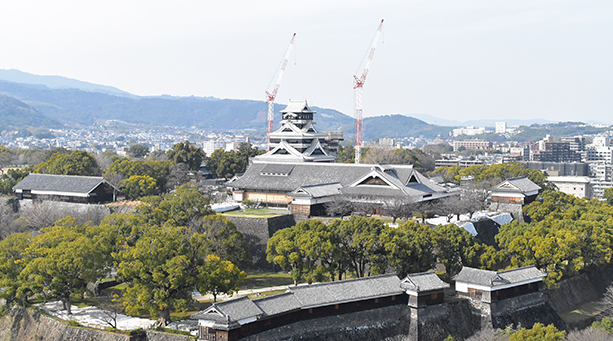
About the City
| Name | Kumamoto City |
|---|---|
| Population | 740,000 |
| Main Industry/ Economy Sectors |
Service Industry, Agricultural Industry |
| Source of Water Supply | Ground water |
| Website | www.city.kumamoto.jp |
Introduction of the City
Kumamoto City is located in the centre of the island in the southwestern part of the Japanese archipelago called, "Kyushu." We have a glorious view of Mt Aso to the east of the city, and to the west, the city faces the Ariake sea.
Kumamoto City is blessed with rich groundwater, and all the drinking water for our population of 740,000 is supplied with this natural spring water. It is a rare and unique case among Japanese cities with more than 500,000 residents that we are able to cover all of our water supply needs with groundwater. As such, Kumamoto City has been named ‘the Number One Groundwater City’ in Japan.
Kumamoto is also a gourmet city with abundant good-quality food such as fruits, vegetables, beef and seafood thanks to the rich nature.
Water Challenges in Kumamoto
Description
All of the water resources used by Kumamoto City’s 740,000 citizens are entirely supplied by groundwater. For this reason, we have d partnerships with the prefectural government and our 11 neighboring municipalities, as well as with businesses and citizens in the region, to undertake various groundwater conservation efforts. Moving forward, it is imperative that we work together to sustainably preserve our groundwater’s quality and its water reserves.
Scale
In terms of population, the region has about one million residents, and, in terms of governing bodies, we are in collaboration with our eleven neighboring municipalities and the encompassing Kumamoto prefectural government, all of whom share our water supply.
Key specs
Many of our neighboring municipalities are undergoing urbanization, and, as a result, the amount of land that can be used to recharge our groundwater supply is decreasing. For this reason, we are currently developing projects to artificially recharge groundwater through rice field inundation projects in Kumamoto and other municipalities.
Additional info
We hope to share more information about the 4th Asia-Pacific Water Summit to be held on October 19th and 20th where we will bring together leaders from 49 countries to discuss water issues. We hope this event will further contribute to finding solutions with regard to numerous water issues across the region.
Leeuwarden - Netherlands
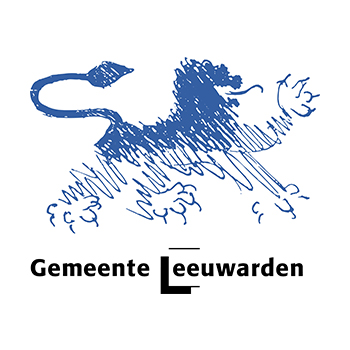
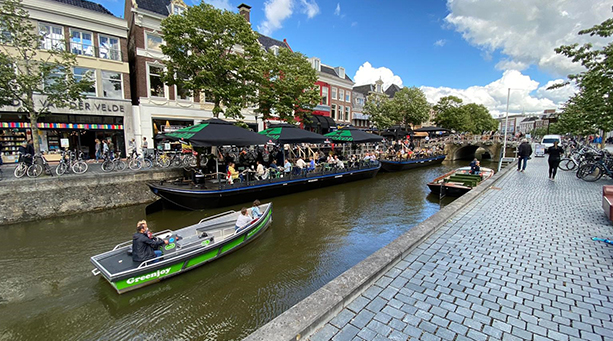
About the City
| Name | Leeuwarden |
|---|---|
| Population | 123,000 |
| Main industry/ Economic sectors |
Agro Foods; Services; Tourism, Water Technology |
| Source of water supply | Ground water |
| Website | www.leewarden.nl www.watercampus.nl |
Introduction of the City
Our city is working on the water topic for more than a decade. WaterCampus Leeuwarden is one of the outcomes of this process. Our mission is to contribute to solving both regional, national and global water issues.
WaterCampus Leeuwarden is the meeting point of the Dutch water technology sector and has the ambition to play a connecting role for this sector for the rest of Europe as well. WaterCampus encourages cooperation between (inter)national companies, educational institutes and governments within the water technology sector, in order to create synergy for world class innovation, education and entrepreneurship. This strengthens the global position of the European water technology sector. WaterCampus also offers a unique research infrastructure, and is a meeting point for scientists and companies from all over Europe.
The international cooperation organized and encouraged by WaterCampus Leeuwarden leads to knowledge, talent and entrepreneurship that contribute to solutions for global water problems.
Water Campus Leeuwarden is formed by:
- The three managing partners: Wetsus, CEW and Water Alliance;
- The partners: City of Leeuwarden, Province of Friesland, Centre for Innovative Expertise Water (CIV) and Water Application Centre (WAC);
- Members: companies and institutions that are connected as a member or partner to the managing partners.
Water Challenges in Leeuwarden – A testbed for world wide water technology innovations
Description
Leeuwarden is located centrally in the province of Friesland, situated in the Northern part of the Netherlands and close to the Wadden Sea. Water is never far away in this delta region. Friesland is known for its lakes and isles.
Main economic sectors:
- Agro Food;
- Servides;
- Tourism;
- Water Technology
Source of water supply:
Groundwater
Main utilities providing water and waste water services:
Vitens and Wetterskip Fryslan
Scale
Inhabitants: 123,000
Total surface : 255,62 km²
- land : 238,38 km²
- water : 17,24 km²
Key specs and challenge
Our city wants to act as a testbed for water technology innovations that can create impact for the long term sustainability goals. Our challenge is to solve global water challenges with local solutions. We invite entrepreneurs, science and other cities to cooperate with us.
We would like to showcase three action lines in our city during the World Water Cities Forum 2020:
1. Wastewater Treatment Plant (WWTP) as a resource and energy factory;
2. Smart and efficient drinking water solutions in the built environment;
3. Smart pipeline inspection in our sewerage and smart asset management.
1. At our WWTP we have a plug and play opportunity for testing new water technology, called demo site. You can bring your container and test your technology in a real life setting with real waste water streams. At the site everything is available. Energy, lab facilities etc. Currently new technologies for bioplastics production, phosphate recovery and recovery of cellulose are being tested.
2. In houses and offices in Leeuwarden and our province new technologies en innovative solutions are tested in a real life situation. For Example a game to create awareness and to stimulate activities to save water, an award winning technology to recycle water in an innovative way at the source in house and a decentral system for waste water treatment.
3. In our sewerage system a robot technology is tested to do pipeline inspection. By doing this inspection pipeline failures are prevented and there is up-to date decision information available for asset management and pipeline maintenance.
WaterCampus Leeuwarden
Our region is working on the water topic for more than a decade. WaterCampus Leeuwarden is one of the outcomes of this process. Our mission is to contribute to solving both regional, national and global water issues.
WaterCampus Leeuwarden is the meeting point of the Dutch water technology sector and has the ambition to play a connecting role for this sector for the rest of Europe as well. WaterCampus encourages cooperation between (inter)national companies, educational institutes and governments within the water technology sector, in order to create synergy for world class innovation, education and entrepreneurship. This strengthens the global position of the European water technology sector. WaterCampus also offers a unique research infrastructure, and is a meeting point for scientists and companies from all over Europe.
The international cooperation organized and encouraged by WaterCampus Leeuwarden leads to knowledge, talent and entrepreneurship that contribute to solutions for global water problems.
WaterCampus Leeuwarden is formed by:
Keyambition/challenge:
Leeuwarden acts as a testbed for world wide water technology innovations.
Additional info
https://www.watercampus.nl/ https://wateralliance.nl/en/
Mikkeli – Finland
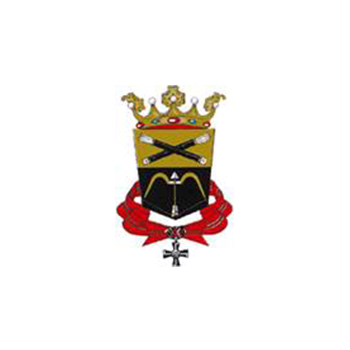
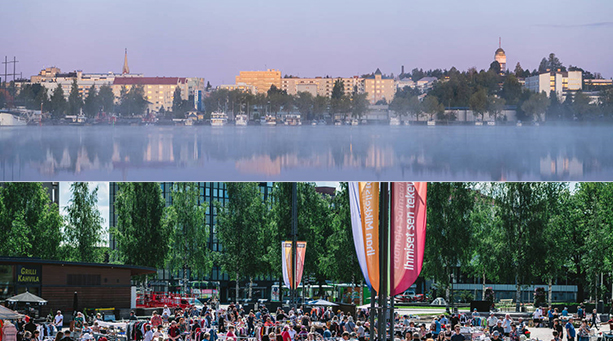
About the City
| Name | City of Mikkeli |
|---|---|
| Population | 55,000 |
| Main industry/ Economic sectors |
Hospital supplies, energy solutions, solar energy, plywood industry, food |
| Source of water supply | Ground water |
| Website | www.mikkeli.fi |
Introduction of the City
City of Mikkeli is located southern Savo, in Finland, Nordic Europe. The strengths of city include clean water, forests and healthy food. We are well study and trained population, technology-oriented, well-known and close to pure nature. Postgraduate studies will have excellent market value, thanks for University of Applied Sciences and the University Center. The university unit focusing on water expertise. Mikkeli is located on pure groundwater. We pump our drinking water directly under the city market. Good quality water is important for individual families and especially for the food industry. All our water used is recovered and gray water is not release directly to nature. Our new gray water treatment plant with new membrane bio reactor will be ready 2021. EcoSairila Business Park, around of gray water treatment plant, will allows research, studying, business and rotation economics in all its forms. Other examples of business in Mikkeli are renewable energy, circulation economy, zero energy homes, wood construction, care for the elderly population.
Water Challenges in Mikkeli – Urban runoffs and effluents to the drainage basin / Educating and recruiting young water professionals
Description
Mikkeli is located in eastern Finland, South Savo region by the Lake Saimaa. Mikkeli has a population of 53,781 and covers an area of 3,229.57 km2 of which 424.7 km2 is water. The population density is 31.64 inhabitants per km2.
Challenge: Urban runoffs and effluents to the drainage basin
Lake Saimaa is the largest lake in Finland, and the fourth largest natural freshwater lake in Europe. Saimaa is spotted with islands, and narrow canals divide the lake in numerous small, extremely fragile parts.
City of Mikkeli industrialized in 1920s and saw mills and other industries sprung by the Lake Saimaa. Also the population increased rapidly. Coming to 1960s when WTT plant started operating, the water quality and state of the natural environment were compromised. Since 1960s the water quality and the state of the natural environments has slowly, but continuously improved. Commissioning the new MBR WWT plant in 2021 reinforces this trend. Still City of Mikkeli, built environment and human activities, urban runoffs and effluents to the drainage basin cause a significant threat to effect delicate Lake Saimaa. Main challenges eutrophication and algae blooming during summer.
Challenge: Aging personnel in water sector. Educating and recruiting young professionals
Water and sanitation infrastructure in Finland was built in 1960s and 1970s. In Mikkeli water supply infrastructure is up to date and a new MBR WWT plant is being constructed and commissioned in 2021. Rest of municipalities in South Savo Region are facing the must do investments in upcoming years. The technology leap sets a huge challenge in aspect of human resources, educated personnel. Not only infrastructure but also personnel working in the water sector is aging. Young professionals are fairly scarce and the difficult to recruit.
Scale
Mikkeli is located in eastern Finland, South Savo region by the Lake Saimaa. Mikkeli has a population of 53,781 and covers an area of 3,229.57 km2 of which 424.7 km2 is water. The population density is 31.64 inhabitants per km2.
Key specs
New MBR WWT plant being constructed under bedrock. Commissioned 2021. Includes water reclamation plant, R&D- and testing- & piloting-facilities. Strong R&D activities. Concept being developed: WWTP as resource factory.
Additional info
jouni.riihela@mikkeli.fi
Orange County (MWDOC) - USA
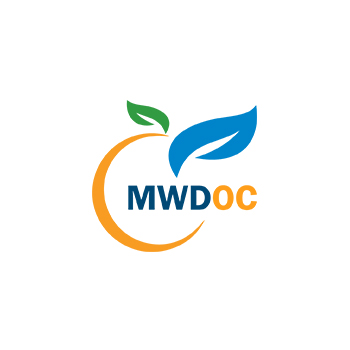
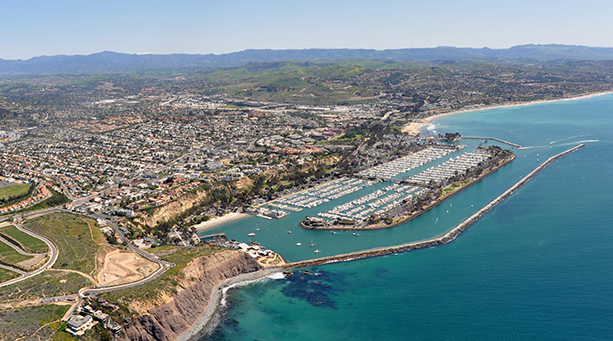
About the Organization
| Name | Municipal Water District of Orange County |
|---|---|
| Population | 2.3 million |
| Main Industry/ Economy Sectors |
Residential, Commercial, Industrial (light manufacturing) |
| Source of Water Supply | Imported Water from Sierra Nevada Mountains (State Water Project) and Rocky Mountains (Colorade River Aqueduct) |
| Website | www.mwdoc.com |
Introduction of the City
The Municipal Water District of Orange County (MWDOC) is a wholesale water supplier and resource planning agency whose efforts focus on sound planning and appropriate investments in water supply development, water use efficiency, public information, legislative advocacy, water education and emergency preparedness.
Established in 1951, MWDOC now serves over 2.3 million Orange County residents through 28 retail water agencies. MWDOC’s service area covers all of Orange County with the exception of the cities of Anaheim, Fullerton and Santa Ana.
Water Challenges in Orange County – Developing a Resilient, Reliable, and Affordable Water Supply
Description
The Municipal Water District of Orange County (MWDOC) is a wholesale water supplier and resource planning agency whose efforts focus on sound planning and appropriate investments in water supply development, water use efficiency, public information, legislative advocacy, water education and emergency preparedness.
Established in 1951, MWDOC now serves over 3.2 million Orange County residents through 28 retail water agencies. MWDOC’s service area covers all of Orange County with the exception of the cities of Anaheim, Fullerton and Santa Ana.
Scale
3.2 million
Key Specs
Local water supplies meet roughly half of Orange County’s total water demand. To meet the remaining demand, The Municipal Water District of Orange County (MWDOC) purchases approximately 70.2 billion gallons of imported water per year ? from northern California and the Colorado River ? through the Metropolitan Water District of Southern California (Metropolitan). MWDOC delivers this water to its 28 member agencies, who in turn, provide retail water services to the public.
Water Supply Development
MWDOC is committed to providing a reliable supply of high quality water for Orange County now, and long into the future. Working closely with Metropolitan and our 28 member agencies, MWDOC studies and evaluates opportunities to improve Orange County’s water supply resources and overall system reliability. Understanding local planning challenges and developing regional stakeholder partnerships, MWDOC works to expand Orange County’s water supply portfolio by providing planning assistance and local resource development in the areas of recycled water, groundwater recharge, ocean water desalination and conservation.
Orange County is in a semi-arid desert climate, and we average just over 12 inches a year of rain. With that being said, we do not have sufficient water supplies to meet the needs of our residents and businesses, which requires us to find alternative water supplies. In addition, Orange County itself serves a very diverse and large region, so the north half of the county has much more reliable local supplies (due to the groundwater basin managed by Orange County Water District). On the other hand, the southern part of Orange County does not have the geographical benefits of a bowl shaped aquifer (South Orange County sits over an underground creek that flows into the ocean), so the southern part of Orange County has far more water supply and water reliability challenges from that perspective (currently, north county is about 50-70% dependent on local supply, whereas south county is 80-100% dependent on imported water supply). Additionally, our imported water supply is heavily dependent on annual precipitation (stored in the snowpack), and with changing climate trends, we have been seeing more and more variability in the availability of our imported water supply. Therefore, we are making many investments to diversify our water supply, both locally and statewide.
Securing a resilient, reliable, and affordable water supply is our highest priority, and many of our other programs (listed below) were developed as a way to support our primary goal of securing a sustainable water supply for our community,
Water Use Efficiency
MWDOC has d award-winning programs that target all water users. Through an innovative, multi-agency approach, MWDOC develops, implements, and evaluates water use efficiency programs that provide multiple benefits. Programs include educational classes, performance reporting, water use surveys and consumer incentives for water-efficient devices. Through the development, implementation and evaluation of these programs, Orange County saves more than 17.1 billion gallons of water each year.
Orange County has long been a leader in promoting water use efficiency, and we have been deeply involved with the creation of new state regulations; however, we have a long way to go, as we still have significant opportunities to increase water use efficiency outdoors. We are also facing challenges with unintended consequences of too much indoor conservation, by means of increased collection system maintenance and issues with odor control, higher strength wastewater, less recycled water, and more. Also, homes are still being built with plumbing standards that do not account for the lower flows and higher solids concentrations, so we are starting to see more issues at the residential level, as well.
MWDOC also provides guidance on water audits for our retail agencies, and we recently launched a regional leak detection program. Currently, we are developing a pilot program to evaluate indoor water use practices and collect data at a more granular level than previous efforts.
Emergency Preparedness
The Water Emergency Response Organization of Orange County (WEROC), which is administered by MWDOC, provides mutual aid planning assistance, and effectively trains member agency volunteers throughout the year, to coordinate and deliver skillful emergency response for all Orange County water and wastewater agencies.
WEROC works closely with the County of Orange, the Orange County Fire Authority, the California Department of Public Health and other entities to ensure a thorough and well-coordinated emergency response in the event of a disaster.
Public Information and Outreach
MWDOC is steadfast in its mission to keep Orange County involved and up-to-date on current water news, water-saving opportunities and pending policy matters through its award-winning public information and outreach programs. Every year MWDOC hosts regularly scheduled Water Policy Symposiums, Elected Officials Forums, educational tours, and co-sponsors the annual O.C. Water Summit in order to engage and educate elected officials, community and business leaders, water industry professionals and the general public about water issues affecting Orange County and beyond. Additionally, MWDOC produces public service announcements and educational collateral pieces including videos, presentations, and briefing papers to ensure our stakeholders are equipped and well versed on issues facing the water industry. MWDOC further engages the public by participating in community events, having an active speakers bureau, and a robust award-winning social media presence.
School Program
Educating the water leaders of tomorrow since 1973, MWDOC’s School Program offers one of the most well-recognized water-education curriculums in southern California. Today, working with the Discovery Cube and Inside the Outdoors, MWDOC has provided nearly three million Orange County students with grade-specific lessons that focus on topics like the water cycle, forms of water and water as an environmental resource.
Legislative Advocacy
Through strong leadership and sound representation at Metropolitan, MWDOC works diligently to secure a dependable water future for all Orange County. This includes unwavering advocacy on behalf of the service area on issues such as water resource and infrastructure planning, development of imported water rates and charges, and sponsorship of statewide water policy that supports regional reliability. MWDOC staff and consultants regularly examine pending legislation and provide s to the Board of Directors monthly. Through this process, the Board of Directors regularly take “official positions” on specific legislative proposals and public policy issues based on MWDOC’s adopted Legislative Policy Principles. The MWDOC Board of Directors, management, staff, and consultants monitor and shape state and federal legislation that impacts the water community and the region as a whole, advocating on behalf of Orange County.
Additional Info
www.mwdoc.com"www.mwdoc.com
Shaoxing - China
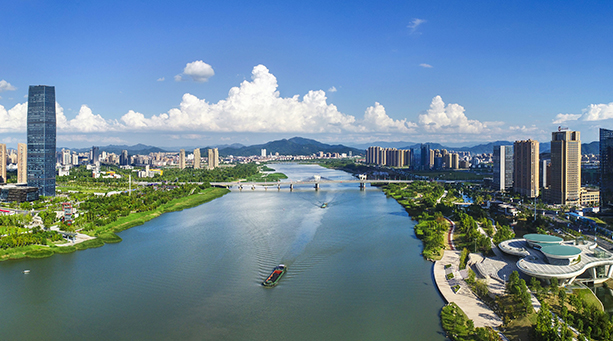
About the City/Organization
| Name | Shaoxing |
|---|---|
| Population | 5 million |
| Main industry/ Economic sectors |
Textile, construction and chip industry |
| Source of water supply | Xiao Shunjiang reservoir |
| Website | www.sx.gov.cn |
Introduction of the City
The subtropical monsoon climate brings Shaoxing four distinct seasons, humid and mild climate as well as abundant sunshine. The city has an average annual temperature of 17.9 degrees centigrade and an average annual precipitation of 1844.9mm.
Plains and hilly lands are Shaoxing's main geographic features. Within its borders, there veins an extensive network of rivers and lakes, including Cao'e River, Puyang River and East Zhejiang Canal. With over 30 large lakes covering the landscape, Shaoxing is typical of a water city in Southern China.
Water Challenges in Shaoxing – Challenge in Water Related Problems
Description
During The summer months of July and August, cyanobacteria appeared in different degrees in some plain river network areas of the city. In the summer of Shaoxing, the long-time continuous high temperature and relatively low rainfall resulted in the concentration of dissolved oxygen and organic matter in water reaching a degree suitable for growth and expansion of cyanobacteria.
Scale
Located south of the lower reaches of the Yangtze River Delta, Shaoxing is adjacent to Hangzhou in the west and Ningbo in the east. It administrates Yuecheng District, Keqiao District, Shangyu District, Zhuji City, Shengzhou City, and Xinchang County. The city has a permanent population of 5 million living in an area of 8,256 square kilometers. The urban area totals 2942 kilometers with a population of more than 2.7 million. Shaoxing boasts beautiful natural scenery, prominent historical figures, and rich cultural heritage. It has won many honorary titles, such as Excellent Tourist City of China, National Model City for Environmental Protection, State Sanitation City, National Double-support Model City, National Forest City, National Garden City, China National Historic and Cultural City, China Habitat City and UN Habitat City.
Key specs
Cyanobacteria increases the viscosity of water, and if people drink such water or eat the polluted fish and shrimp by mistake, it will cause harm to people`s health. And it will also cause loss to the aquaculture industry. It destroys the beauty of the lake. Through the World Water City partnership, we hope to use more practical and advanced biological, physical and chemical methods to remove cyanobacteria from water.
